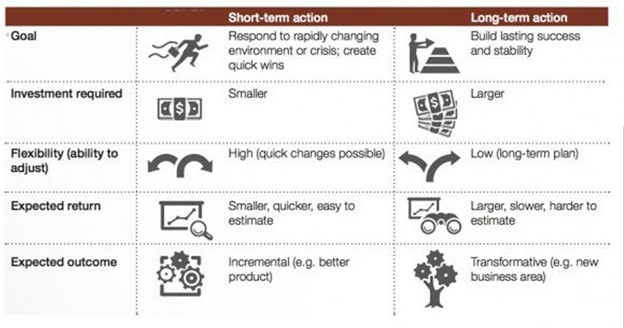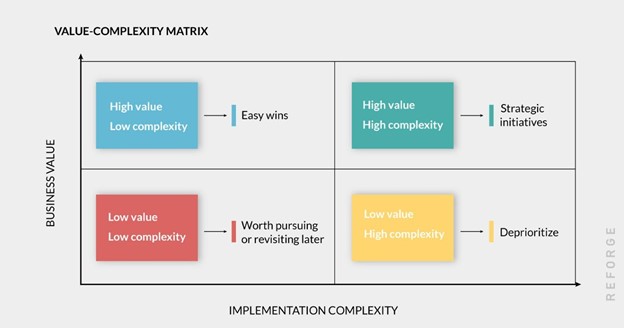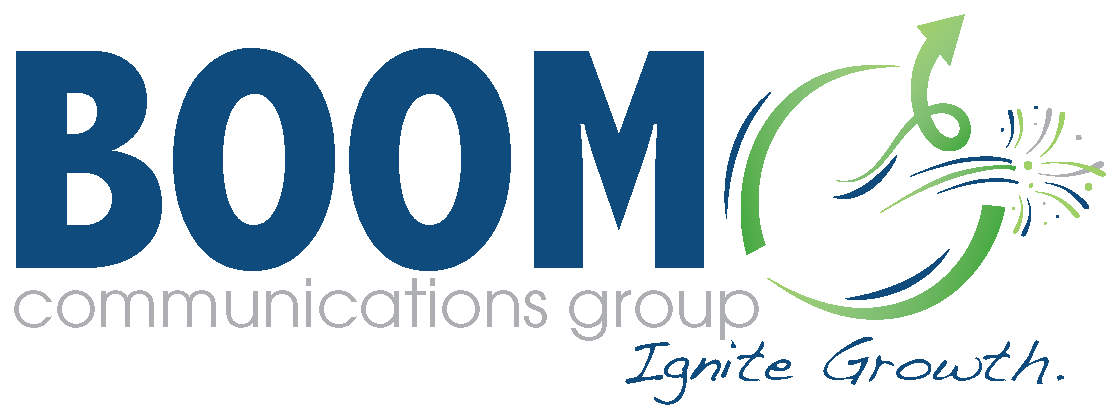
Short-term and long-term goals power the momentum and success of every organization. After all, people who set actionable tasks for their goals and give weekly progress reports generally achieve 40% more than those who don’t.
However, by focusing on daily objectives, it’s easy to lose sight of the overall plan for your organization’s future.
Let’s explore the steps you can take to give a long-term business vision to your organization for continued growth and success.
Key Takeaways
- A long-term business vision sets a standard for decision making and serves as a compass that provides focused direction.
- Your long-term business vision helps you to realize your company’s future potential.
- Analysis, prioritization, goal alignment, and communication can help you develop a long-term business vision for your organization’s success.
What is a Long-Term Business Vision?
A long-term business vision is a goal for what you want to see your organization achieving in the future. It provides a purpose for all of your business decisions and aligns initiatives, actions, and people. This reduces waste and helps you achieve success.
Current trends, the actions of your competitors, and the weekly and monthly performance of your teams can distract you from your long-term goals. By creating and communicating a clear long-term vision, your organization can focus on what will help propel the business toward success.
A long-term business vision typically falls into one of three categories:
- Market reach expansion: Generate business revenue in new and exciting ways.
- Scalability: As you gain a foothold in new markets, your operations must be able to grow and sustain your newfound customers.
- Growth/profit balance: The key to success in rapid growth is to do so profitably.
By setting clear long-term goals, you create a set of standards by which to measure every opportunity for business action.
Importance of Long-Term Business Vision
A long-term business vision helps you decide whether your actions help to propel your organization closer to its ultimate goals, has no impact (good or bad) on the future of your organization, or benefits the business just for one day, impeding the ability to achieve long-term goals.
Your vision might revolve around your organization’s reputation, business growth, quality standards, or even sustainability. Whatever drives your efforts, think of a long-term vision as an ultimate destination, and short-term goals are checkpoints along the road to success. Without a clear understanding of where you’re headed, your path would be uncertain. However, with the destination in mind, you’re able to focus on manageable milestones to help you get to the next step on your path to success.

Perhaps your long-term vision is to create a newspaper printing operation that’s positioned as a market leader delivering the ultimate newspaper printing services to your region. To achieve that goal, you’ll need to grow distribution and increase advertising revenue, both short-term goals that impact your long-term plans. Without a long-term business vision, your organization has no compass to guide its daily function.
The following video goes into more detail about the importance of developing a long-term business vision:
5 Steps to Give Long-Term Business Vision to Your Organization
Whether you’re a new business starting out or an established organization looking to redefine your goals, it’s never too late to create and implement a long-term business vision. Here are five steps to map out a plan for the future of your organization.
Step 1: Examine Your Current Situation
Before you can determine what you want to accomplish in the future, it’s important to gain a strong understanding of what is happening currently in your business. Take a close look at your daily operations. Discover what’s working well, what needs improvement, and what requires a complete overhaul.
Consider asking for input from your staff members to learn how they perceive the organization’s functionality. They work there every day and may see things you don’t. Their feedback can be invaluable.
Step 2: Prioritize Your Initiatives
It’s important for a business to constantly implement new initiatives to set themselves apart from the competition and continue to provide value for its customers. However, initiatives that aren’t in alignment with the long-term goals of the business can pull manpower and focus away from those that would propel the organization forward.
Eliminate plans that are inconsistent with your long-term goals. Instead, focus on the ones that are sure to bring you closer to your mission. Then, prioritize those so that you’re maximizing your time, energy, and resources.

Step 3: Create Opportunities for Small Victories
Once your initiatives are prioritized, set short-term goals to work your way toward the long-term plan. These manageable tasks allow the organization to see a succession of small victories, all of which build excitement and encouragement among your team. Seeing these small wins creates a sense of accomplishment and builds momentum toward the ultimate long-term goal.
Step 4: Align Your Financial Goals
First, you must have a solid understanding of your company’s long-term financial goals. Then, discover opportunities for upselling and cross-selling. Target your organization’s current customer base to confirm those goals.
Metrics are the key to success. Break down your financial goals into yearly metrics so you can easily measure your progress and determine what’s working for your financial plan and what you need to reconsider.
Step 5: Communicate Your Vision
Once you have a clear vision for your organization’s future, the ultimate step is to share that vision with the world. Communicate it clearly to your staff members so they know their purpose. Understanding the role they play in the overall big picture of your company can help motivate them to greatness.
Publicizing your vision also lets your customers and community know what you expect of your organization and what they can expect of you. This can help build trust, earn loyalty, and generate overall business growth and success.
BOOM Communications Group Helps You Fulfill Your Long-Term Vision
BOOM Communications provides printing, advertising, marketing, and consulting services to help grow your business. We can work with you to create an effective strategy to bring your long-term business vision to fruition. Let’s work together to realize your organization’s best version of itself.
Contact BOOM Communications today to learn more about creating and implementing your organization’s long-term business vision.
